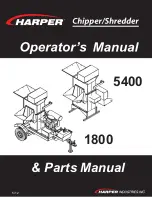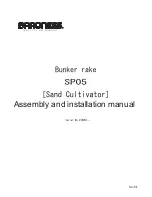
Condenser maintenance
Maintenance of the condenser microchannel coils is essential to ensure trouble-free operation of
the heat exchangers.
Cleaning requirements of microchannel heat exchangers
Regular cleaning is an essential part of maintaining the integrity and heat transfer properties of
microchannel heat exchangers (MCHX). Failure to follow cleaning guidelines can result in heat
exchanger damage, including leaks or loss of performance. During the cleaning process, care must
be taken to avoid damage to the coils and the protective coatings. The following care points must
be followed during cleaning:
•
Do not
use high-pressure water, such as a pressure washer, to clean the coils. High pressure
water can damage the fins and the protective coatings on the coil.
•
Do not
contact the coil with a hard object such as a hose nozzle, hard vacuum nozzle, or
any other tool. Hard objects or tools can cause mechanical damage to the coil material and
protective coatings on the coil.
The required cleaning procedure is different depending on the type of coil and protective coating
supplied with the coil. To maintain the integrity of each type of coil, see
Cleaning Environment Guard Premium MCHX coils
Table 97: Required cleaning materials
Part number (P/N)
Description
013-04185-000
Cleaner, Coil, 4-1 gal
013-04185-001
Cleaner, Coil, 1 gal
013-04186-000
Reducer, Salt, 4-1 gal
013-04186-001
Reducer, Salt, 1 gal
Cleaning Standard and Environment Guard MCHX coils
About this task:
Note:
Standard and Environment Guard coils are silver-gray in color.
Standard and Environment Guard microchannel coils must be cleaned following this procedure at
least once every quarter or every 3 months to ensure that the integrity of the coils and the warranty
of the coils are maintained. In environments where coils can become heavily fouled, a monthly
frequency of cleaning is recommended.
1. Use a vacuum cleaner with a soft brush attachment to remove surface debris such as dirt,
leaves, insects, or fibers. When brushing debris off the face of the coil, you can also use a
soft bristle brush. Do not use a wire brush. Do not scrape the coil with the vacuum nozzle, air
nozzle, or any other hard tool.
2. Rinse the coil with potable tap water. Use a gentle spray from a spray nozzle with a plastic
end. Do not contact the coil with the hose nozzle. Rinse the coil by running water through
every passage in the heat exchanger surface until it is clean.
3. It is important to remove any excess water trapped in the coils immediately after the final
water rinse.
a.
To fully dry the coils, run the condenser fans on the chiller after the final water rinse.
b.
To remove any excess water, blow air through the coils with a hand-held blower or
vacuum.
139
YVAM Control Center
Summary of Contents for YORK YVAM 0350
Page 2: ...2 YVAM Control Center...
Page 10: ...Figure 4 Variable speed drive nomenclature YVAM Control Center 10...
Page 15: ...Figure 8 System piping and instrumentation diagram P ID 15 YVAM Control Center...
Page 154: ...Figure 62 Sample printout status or history YVAM Control Center 154...
Page 155: ...Figure 63 Sample printout status or history continued 155 YVAM Control Center...
Page 156: ...Figure 64 Sample printout setpoints YVAM Control Center 156...
Page 157: ...Figure 65 Sample printout setpoints continued 157 YVAM Control Center...
Page 158: ...Figure 66 Sample printout schedule YVAM Control Center 158...
Page 159: ...Figure 67 Sample printout sales order 159 YVAM Control Center...
Page 160: ...Figure 68 Sample printout security log report YVAM Control Center 160...
















































